Another light meter. This time the Astrhori AH-M1. At first glance, I thought this meter was just going to be a copy of the Doomo Meter S which I reviewed with the title “just another OLED light meter…?” In the end, I liked that meter, and I quite like this one too. In fact, despite them being similar in look, feel, and function, this one has a slightly more intuitive user interface. Though it’s fair to say my experience with this light meter hasn’t been without hurdles…
Shoe mount light meters have gone from being expensive and harder to come by to being almost ridiculously common and in many cases also very affordable. They also range from the basically pretty crappy to the fairly luxurious. What’s interesting though is that the price of them doesn’t necessarily correlate with the quality of build etc. The Chinese, of course, have the advantage. I’m not going to get into the ins and outs of that discussion here, but whether you like it or not, the fact remains that the there’s a lot of products coming out of China directly now that are as good as if not better than the products made elsewhere – at least in terms of the quality of the materials they’re made of. The trick seems to be that they are capable of producing much smaller batches of products out of materials that would cost a fortune to make smaller batches of in the west. Which is why almost all of the Chinese light meters are made of metal and all the ones from the west still include elements of 3d printed plastic. There does seem to be a downside though.
Whilst the overall build, or at very least the quality of the materials is often higher, the cost seems to be kept lower through lesser quality assurance processes. It also often seems to be the case that early batches of new products aren’t always up to muster. As I alluded to in my opening paragraph, the first version of this meter I experienced wasn’t that great. In fact, the review I have written is actually based on the third one they sent me. That might sound worrying, but actually as I talk about in my recently published article about “silent upgrades” to Chinese made products, I believe it has just taken them a few batches to iron out early issues. I talk quite a bit about this meter in that article, so if you want to know more, it might be worth a read.
In short, I’m fairly confident that if you were to buy a new one of these meters from the manufacturer today, you would get a copy that matches the experiences I have outlined below. So with that out of the way, let me get to actually reviewing the Astrhori AH-M1.
Design & Features
The Astrhori AH-M1, like the Doomo Meter S that is similarly designed, is a more simple OLED screened light meter. As you’ve probably gathered, the housing is entirely made of metal and has a nice solid feel to it. It has a screen, a control dial and a single button on the back. Like most of these meters now, the shoe mount is also movable to allow it to be mounted on different cameras and it not get in the way of other features on the camera. What’s nice about this particular shoe mount is that it has a sprung mechanism to hold it tighter to thinner/looser shoes. Some of these meters supply a range of different fitting mounts, but I prefer these sprung ones.
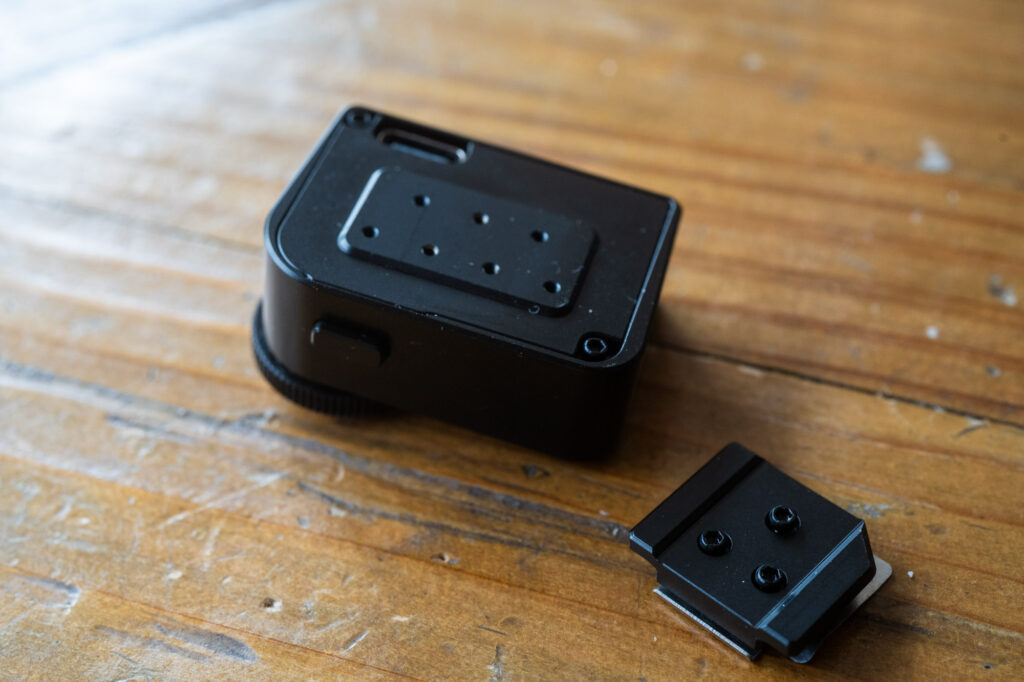
The dial on the later black version I have rotates really nicely. It turns quite lightly but has a satisfying indent click which for the most part marries up to the change in settings on the screen. I have found once in a while that it can get a bit twitchy between settings, as though the clicks and the settings get out of sync. In the extreme, it sometimes also seems to jump a bunch of settings. I’ve found just a quick back and forth twiddle of the dial helps reset the issue so it’s not too problematic. Turning the dial quickly also seems to change the settings nice and quickly too, though I’m not sure it quite keeps up sometimes, but I need to turn it much more quickly than I would likely do so in real life to get that sense.
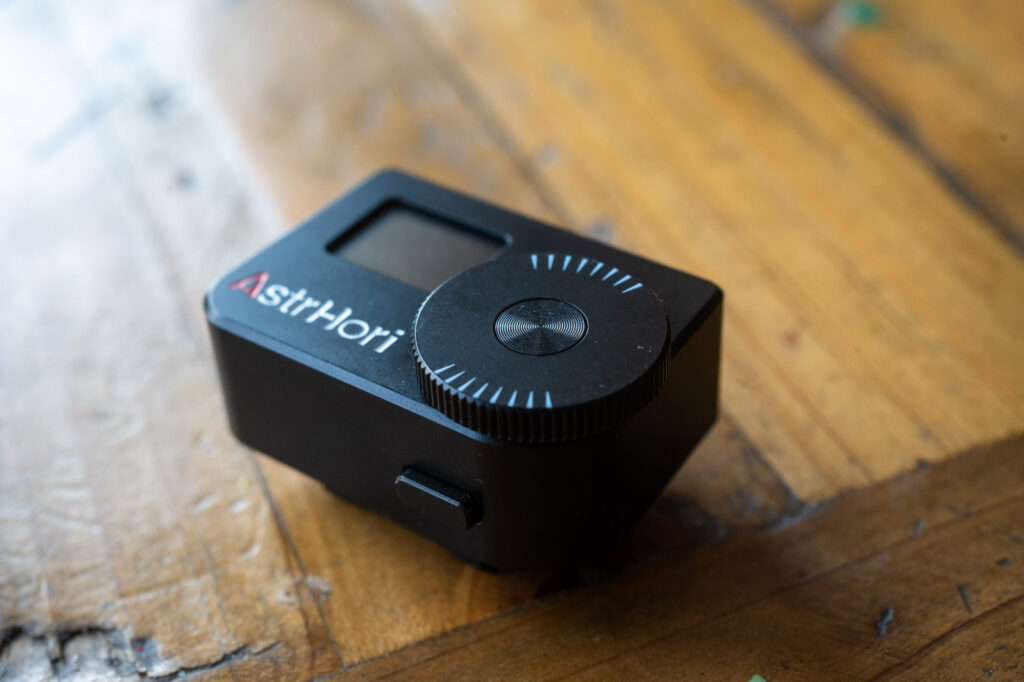
The display also provides all of the information I think most people could require from a basic shoe mount meter. It has the shutter, aperture, ISO and EV displayed at all times. There’s also a battery indicator top right of the display.
Settings specs
Shutter speed settings range from 30 seconds to 1/8000th in 1/3rd stops. Aperture settings range from f/1 to f/32 in 1/3rds. ISO settings from 5 to 6400 in 1/3rds. All of the settings seem to be as expected without any anomalous out of the usual sequence numbers that can sometimes be found on these types of meters.
Modes
The Astrhori AH-M1 has two modes, aperture and shutter priority. It also allows the ISO to be set as well as having exposure compensation. Switching between aperture and shutter modes just takes a quick double click of the button. To change the ISO it takes a quick click followed by a long click. Returning to aperture or shutter adjustment takes a single click. If you want to adjust the exposure compensation, it takes a single then long click to enter the ISO adjustment mode first, then from there another single then long click will enter the exposure compensation mode. A further single click returns to aperture or shutter adjustment again.
The exposure compensation mode allows adjustment in 1/3rd stops -/+ 3ev. One thing to note is that if you apply exposure compensation it doesn’t show this on the screen when in normal shooting mode, so if you use exposure compensation regularly, you’d want to make sure you check your settings or reset it to zero after each use. That said, one nice thing about the exposure compensation being hidden is that it could also be used to calibrate the meter if you find it to be out from your tastes/needs.
Possibly the headline feature is how it takes the readings. The Astrhori AH-M1 has the ability to be switched between constant reading and single reading modes very easily. For single reading mode a single click of the button will bring up a new reading. A slightly longer click of the button switches it to constant reading mode. When in constant metering mode, a single click of the button locks the reading for a few seconds. A slightly longer click returns it so single reading mode. This for me feels like a really elegant implementation of the ability to switch between modes.
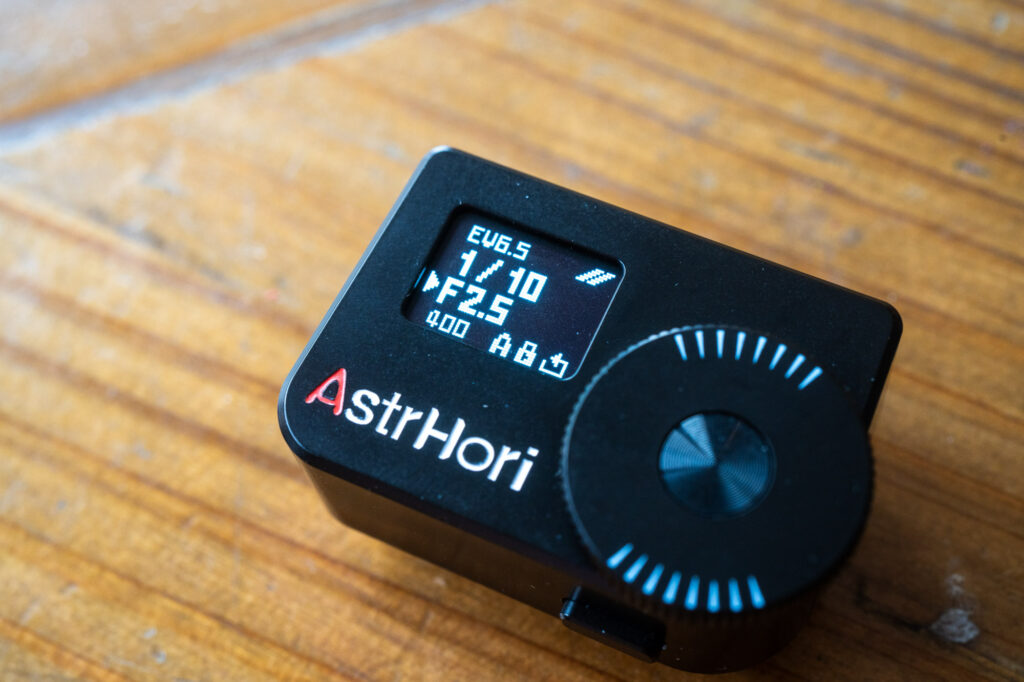
Accuracy
The first version I had of this meter had the propensity to give occasional wildly inaccurate readings. Though I didn’t go into this detail within the article, I mention this in the context of my silent upgrades post. This was an issue reported by some of the people I spoke to on instagram about this meter. It was also an issue I found. The second one I had didn’t suffer this issue. Nor does this 3rd one which seems to match the settings of my Voigtlander VCii which is the standard I use to measure the accuracy of all the shoe mount meters I have tried. It also seems to work nicely in brighter higher contrast light and lower dim light fine too. In short, I don’t have any accuracy concerns about this later version of the Astrhori AH-M1.
Battery
The Astrhori AH-M1 gets its power from a built in battery that’s charged via a USBC port on the bottom of the meter. It seems to last pretty well.
Final thoughts
As I said at the beginning of the post, I quite like this Astrhori AH-M1. It’s similar to the Doomo meter S but has a slightly more intuitive user interface. I also really like the implementation of how it switches between constant and single metering modes. What’s less appealing is the fact that even after it has been updated, it still has a slightly tweaky dial that can sometimes make for settings that jump about a bit. That said, it’s worth noting that it is not a particularly expensive meter, and for the money – if you can cope with the sometimes wonky dial – it strikes me as pretty good value.
You can read my thoughts on a selection of different shoe mount light meters here
You can also buy the meter here
Share this post:
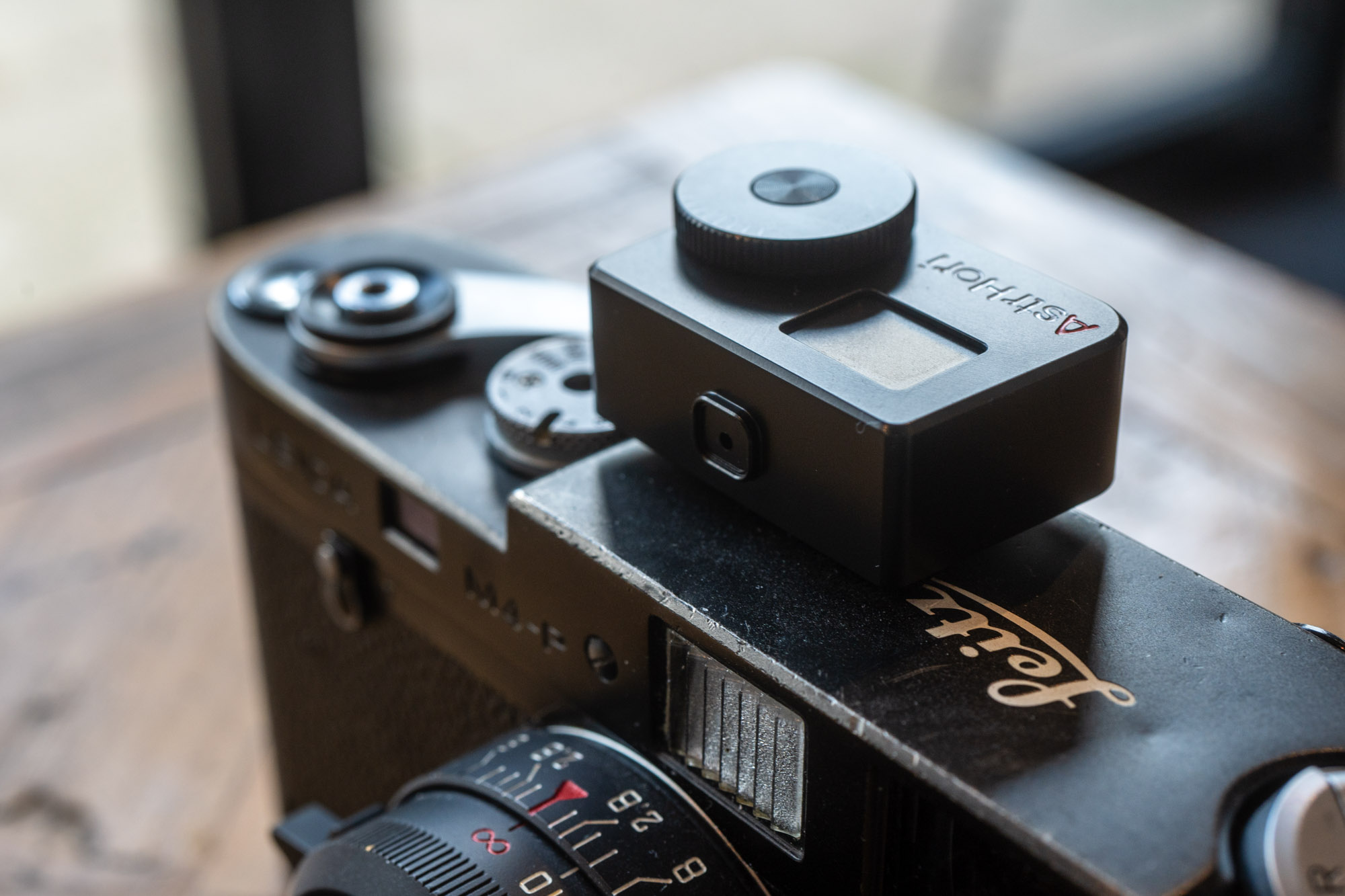
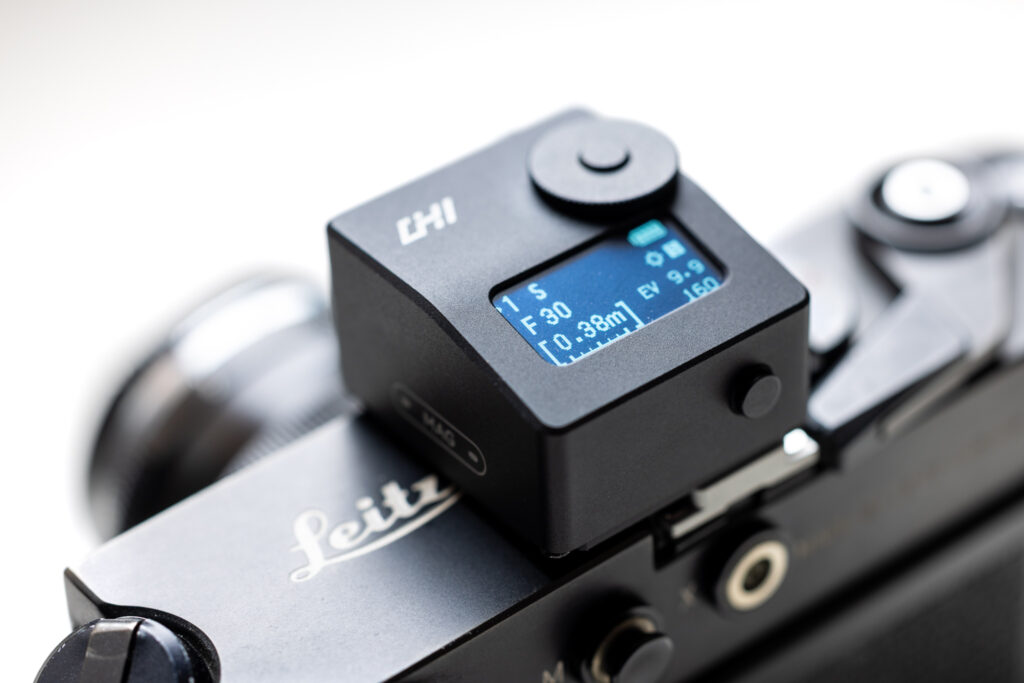
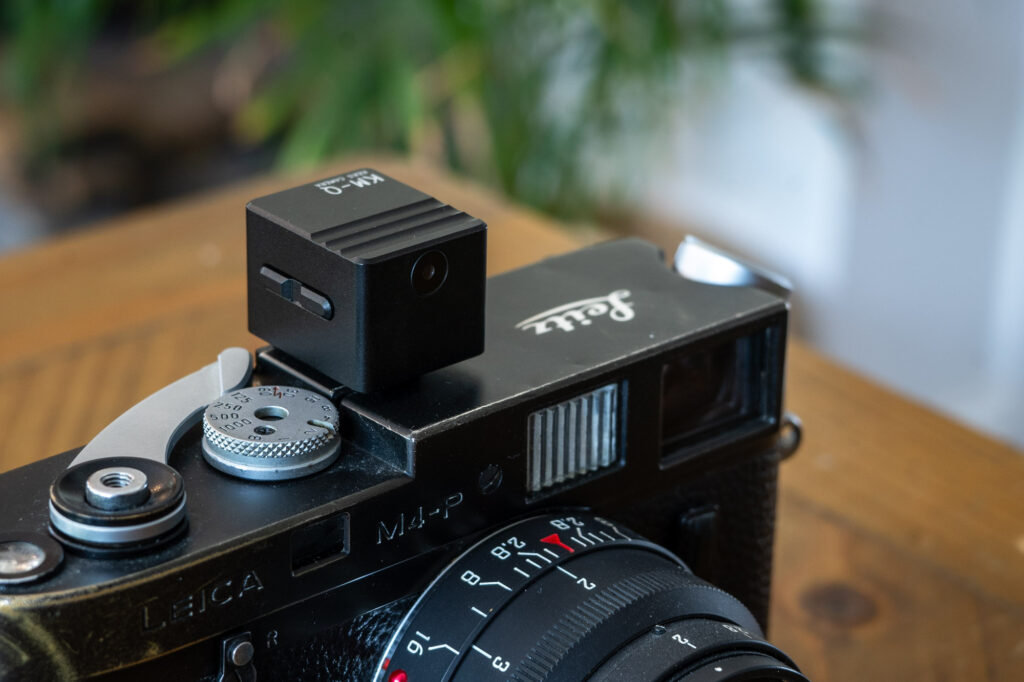
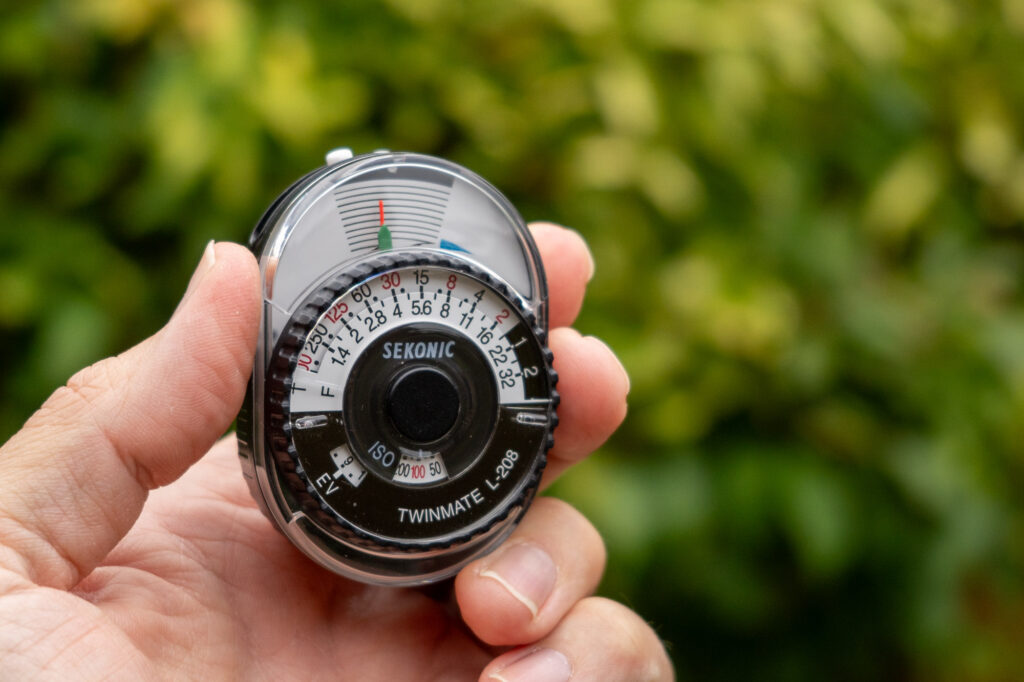
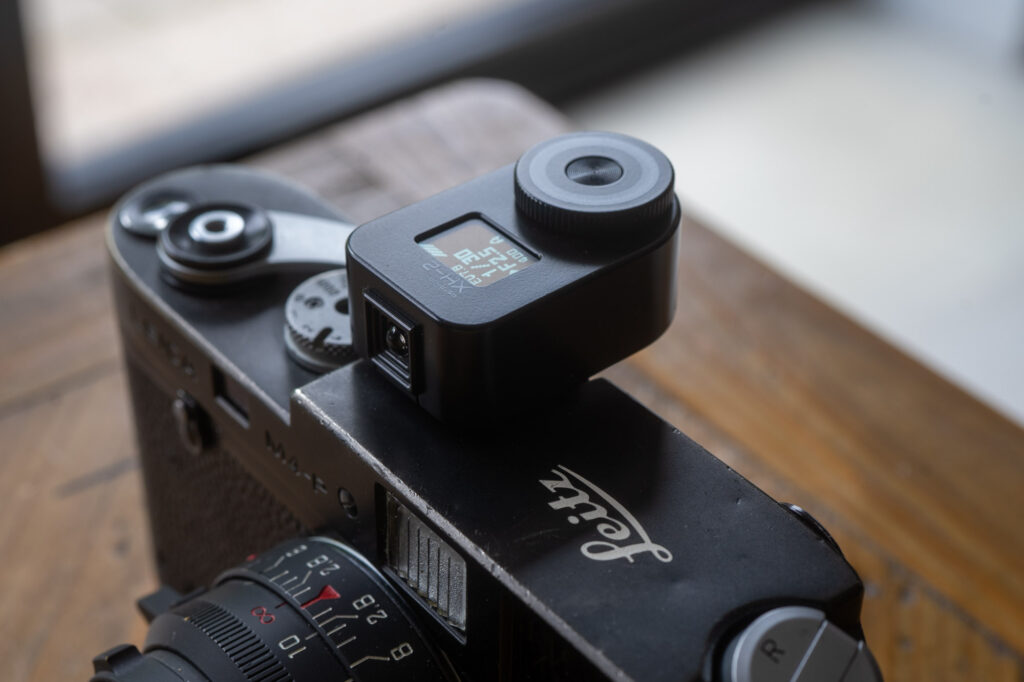




Comments
Gary Smith on Astrhori AH-M1 Shoe Mount Light Meter Review
Comment posted: 14/02/2024
I just completed shooting my first 36 exposures through the Barnack Leica IIIc using an app for my iPhone called: Lghtmtr. I've yet to get the roll developed but it should go in the mail tomorrow (at least this week). It's a very simple app: you open the app, take a reading and you then see a screen with three adjustable columns for shutter speed, aperture and ISO. there is a highlighted band that shows the required values. Changing any column will cause the others to adjust. I paid nothing for this app and I'm assuming that it is simply using the iPhone's camera and capturing the exif values and allowing you to change them.
As I was driving home (from the coast) I thought that the app would be more useful if it allowed you to accumulate the used settings and associate them with the review image captured and then output a file via email to yourself. This way you could easily capture all of the values and have them associated with an image that you could then review against the prints.
Darren Allen on Astrhori AH-M1 Shoe Mount Light Meter Review
Comment posted: 20/02/2024
Leon Winnert on Astrhori AH-M1 Shoe Mount Light Meter Review
Comment posted: 02/09/2024
Using it very easy. Shutter speed and f stop values are clear and easy to read. I really like it and if as I do, you can live with the odd transient idiosyncracies as described in the origion review then highly recommended. And to my mind excellent value for money.